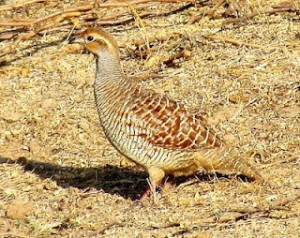
For half a millennium now, the people of Muli, a nondescript town in Gujarat’s Surendranagar district, have revered the partridge and would take it askance were someone to kill one. But would you expect anything less from a community that sacrificed hundreds of lives to save the bird from being killed centuries ago? Once a year, they convene on the outskirts of the town to commemorate the horrifying event of 1474 that lead to the town’s tryst with the fowl.
The chain of events had started off in a mundane manner when a partridge, despite being injured, escaped a group of hunters. The Chabad tribal hunters found it in the custody of Jombai, mother of Lakhdhirji, the chief of the Sodha Parmar Rajputs, who were camping at Muli. She had found the bird in her tent, behind the image of Mandavraiji, a symbol of the Sun God and the Parmar’s presiding deity. She refused to hand it over, arguing that the bird had sought sanctuary and she could not go against the Kshatriya custom of providing protection to living beings that sought it. She and her younger son Munjoji offered to compensate the hunters with cows and goats. But the Chabads wouldn’t listen.
All hell broke loose and a battle began. The Sodha Parmar Rajputs had Brahmins, Rabaris (cowherds) and Harijans on their side. Around 200 of them, Munjoji included, died, but not before felling more than 400 rivals in order to save the bird.
Stone memorials in Muli, built for each person who died in the battle, testify to the folly and the moral integrity of that day. The caste identity of those who died fighting on the Parmar side is depicted on each stone palli. The Parmars are shown with a sword in hand, the Rabaris as riding a camel, while palms stand for the women who were killed. From that day on, Muli’s Parmars vowed never to kill a partridge and accorded it a divine standing. Even during times when partridge hunting was rampant and was a favourite pastime among the royals, killing it was banned in Muli.
Says Jitendrasinhji, scion of the ruling family of Muli, “I am proud that my ancestors were associated with one of the noblest acts in human history.” Historians have written about the great war over a mere partridge, for the uniqueness of the battle moved them as much as the practice of treating alike all living beings that seek protection, be it man or bird.
(Sourced with gratitude from India Today, June 13-2005)





